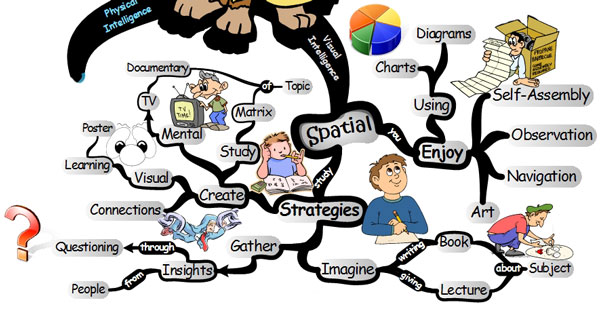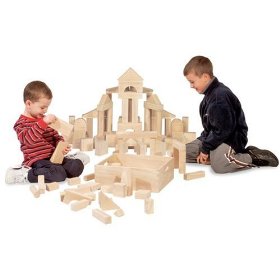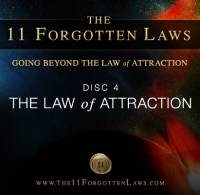|
Your Visual and Spatial Intelligence - your own private Entertainment Centre!Having Visual and Spatial Intelligence means that you have a strong ability in one of the 8 intelligences as suggested by Howard Gardner in his work about Multiple Intelligences. Beyond the descriptions of the eight intelligences, certain aspects of the theory are important to remember. 1. Each person possesses all eight intelligences. Each person has capacities in all eight intelligences. Of course, the eight intelligences function together in ways unique to each person. 2. Some people appear to possess extremely high levels of functioning in all or most of the eight intelligences, yet others appear to lack all but the most basic aspects of the intelligences. 3. Most fall somewhere in between highly developed in some intelligences, modestly developed in others, and relatively underdeveloped in the rest. 4. People with learning disabilities often exhibit deficits in Linguistic/verbal Intelligence or Mathematical/logical Intelligence but show strengths in other areas. Unfortunately, schools put more emphasis on verbal/linguistic and logical/mathematical, which means that any other thinking skill remains undiscovered. Get the whole picture of all the Thinking Skills here Analyzing the learning styles and personalities is really no more than carefully examining the dynamics and fibers of every individual.
Imagine putting 30 different people in one room and then wondering why they don’t do things the same way, see things the same way, agree on everything, and desire the same things. Yet this is exactly what society does, how training and facilitation is done, and sadly, also mass schooling. It is a self-perpetuating cycle of unproductive, unhappy people not utilizing most of their thinking skills.
Visual and Spatial Intelligence
DESCRIPTION • Visual and spatial perception
• Interpretation and creation of visual images
• Pictorial imagination and expression
• Understands relationship between images and
• and between space and effect
RELATED TASKS OR ACTIVITIES
• Design a costume
• Interpret a painting
• Create a room layout
• Create a corporate logo • Design a building • Pack a suitcase or the boot of a car
SOCIETAL ROLES • Engineer • Surveyor • Architect • Urban planner • Graphic artist • Cartoonist • Photographer • Art teacher • Inventor • Pilot • Fine Artist • Visionary • Hair Stylist • Sculptor • Hunter • Scout • Cartographer • Interior decorator • Cosmetic & beauty consultant Learning /Teaching / Facilitation StrategiesPeople with Visual and Spatial Intelligence respond well to: • Constructing concepts
• Synthesizing concepts
• Visualizing material
• Creating images
• Conceptualizing new ideas
• Experimentation
• Demonstrations
• Drama and skits
• Body language – gestures and facial expression
• Educational games
• Visual display – diagrams, pictures, illustrations
• Aesthetics
• Poetry and art
• Idea challenges
• Story telling
• Humour – especially, but not only, pictorial ones!
• Geometry in Math – rather than Algebra
• Colours & shapes
• Photography
• Instruction based material – they visualize the journey
• Memorizing places and scenery
• Artistic composition
• Storyboarding projects
• Visual projects
• Organising & structuring content
• Sequencing content
• Data base content
• See the ‘big picture
Technology Tools Which Can Be Used In The Classroom
• Photo sharing websites
• Comics and Sequential art
• CAD - Computer-Aided Design
• Animation software
• Draw programs
• Imaging software
• Presentation - (PowerPoint)
• Computer-generated charts, graphs, and tables
• Spreadsheets for charts and graphs
• Multimedia authoring
• Map making tools
• Visual materials: photographs, clipart, charts, graphs
• Colour-code projects and ideas
• Match pictures to vocabulary words
• Visual Artwork
BUSINESS ACTIVITIES• Desktop publishing
• Spreadsheets for charts and graphs
• Computer-Aided Design
• Desktop presentation (PowerPoint) - visual layout aspect
• Web development • Digital drawing
• Multimedia authoring
• Video conferencing
• Visual information materials: photographs, clipart, charts, graphs, tables
•
• Match pictures to vocabulary words- training and facilitation
• Visual Artwork
• Computer-generated Board Games
• Digital Camera work
• Concept Mapping - Tools and Diagrams
• Read signs of coming change
• Integrate ideas and concepts
• Facilitation / training
• Develop detailed plans & procedures
• Find overlooked flaws
• Synthesize elements into new whole – strategic planning
• Office & factory design and layout
All of the abilities listes above are enhanced when used in tandem with other intelligences. Nothing ever stand alone. So when you bring more of your intelligences to the table your Visual and Spatial Intelligence is also enhanced.
Explore all the Multiple Intelligences from here Defining it differently through the hemispheres: Left Brain and Right brain Return from Visual and Spatial Intelligence to Consciousness-Evolving
|















